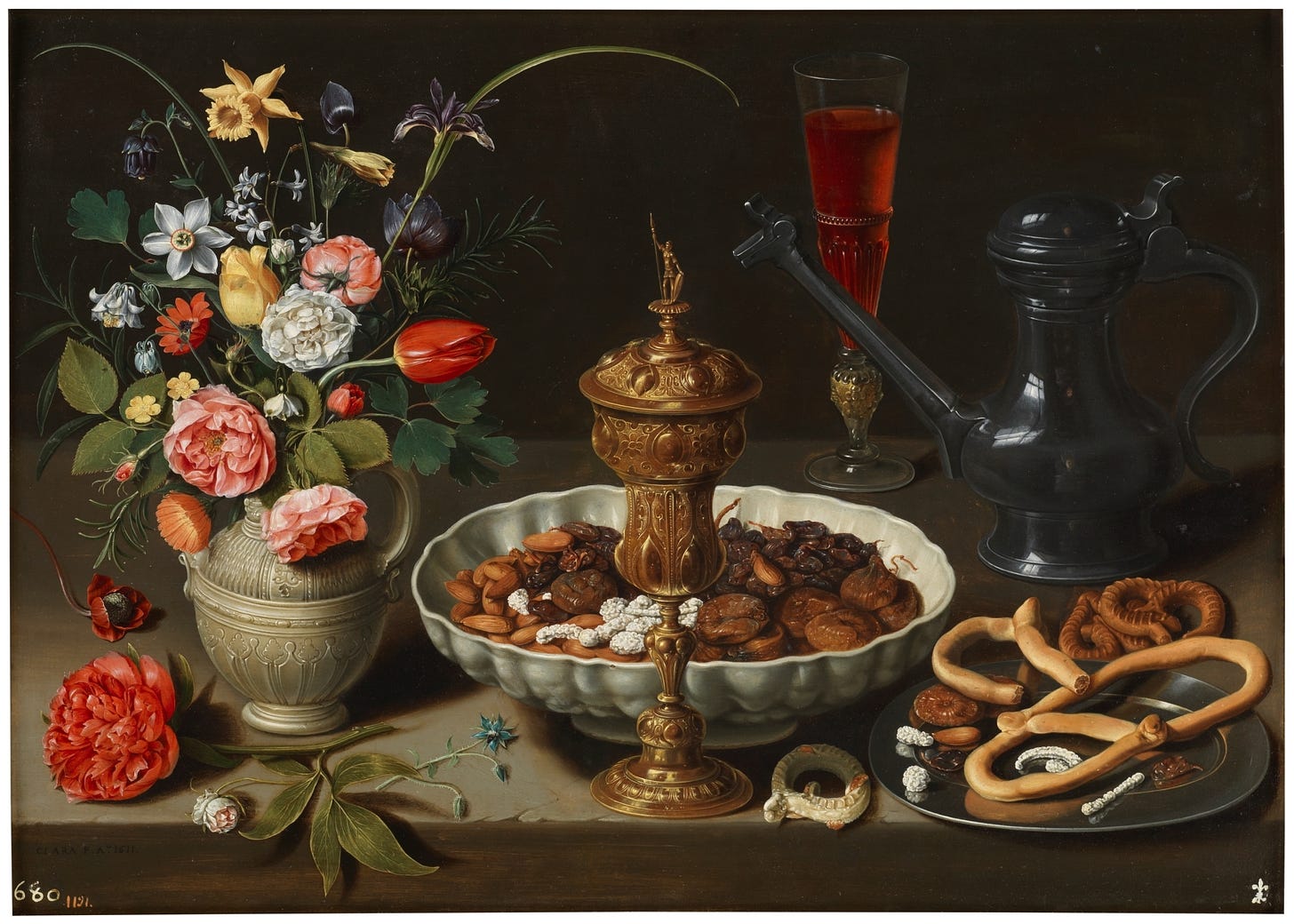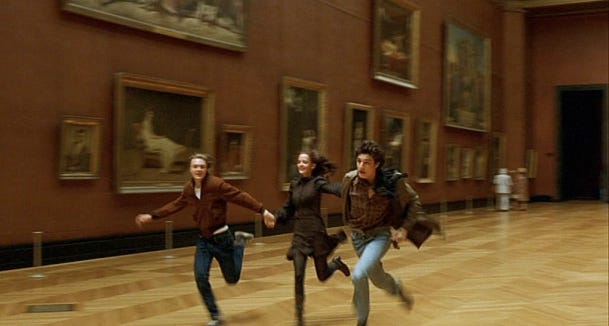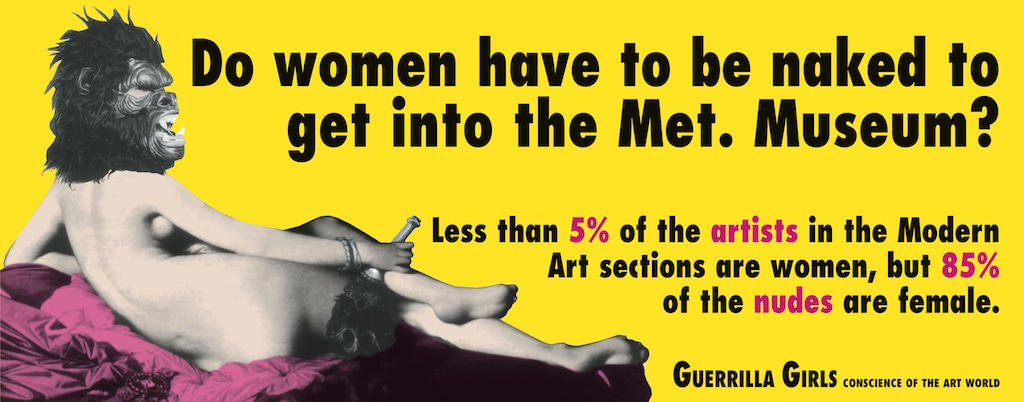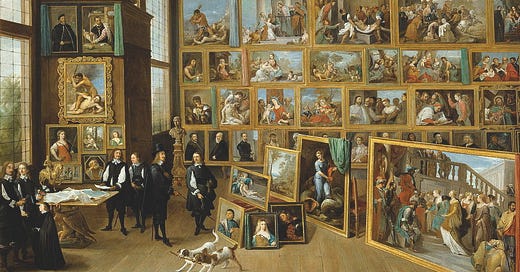The number of art history degrees granted in the U.S. has tumbled from 5,306 in 2012 to 3,544 in 2023 — that’s a 33% decline!!1 The culprit? Mass defunding of humanities programs in American universities.
This defunding pushes the study of art further behind the golden gates of privilege and elitism. But we, the ruthlessly curious, we persevere! Thanks to the efforts of passionate educators, public institutions, and the Almighty Mark Zuckerberg’s Internet, we can now take the study of art history into our own hands.
So whether you’re a student interested in exploring the discipline or a post-grad whose brain is slowly melting into a sludge of corporate jargon (looking at myself here), pull up a chair, order an espresso martini, and peruse this Tasting Menu to get you started on your journey as a self-taught art historian.
🍽️ An art history tasting menu

1) “L’Apéritif”: A thoughtful museum visit
To begin, we’ll need to warm up our palates. Don’t go straight for the dense theoretical texts and choke on 30-hour long video courses, we only have one staff member in this restaurant who knows how to do the Heimlich (and he’s not very good).
First we need to think about WHY we’re here — why we WANT to study art history. For most of us, that answer starts and ends with the art itself.

If you’re able, start by visiting your local art museum. Below are some museums that offer free or reduced admission.
If you’re in NYC and have a New York State ID, The Metropolitan Museum of Art offers “pay what you wish” admission at all times.
The Met also has cute “date nights” on Fridays and Saturdays with live music (more info here).
If The MOMA in NYC is more your style, students get in for $17 and NYS residents can visit for free on Friday evenings (check out their site for details).
The National Gallery of Art in Washington, D.C. is always free.
The National Gallery in London is free to the public.
Many museums and art galleries offer free admission on the weekends or to students.
If a physical museum visit isn’t accessible to you, take yourself on a virtual visit!
Many world-renowned museums offer virtual tours for a fee (check out the Prado’s virtual tours if you can’t make it to Madrid).
Most museums also have a free digital collection on their websites:
Google Arts and Culture has SUPER high quality digital scans of countless artworks and artifacts. You can study Da Vinci’s Mona Lisa in far more detail than you could visiting the Louvre in person, where that ambiguous smile is hidden behind bullet proof glass and a sea of selfie sticks.
🍷 Wine pairing: Watch John Berger’s Ways of Seeing — This BBC program from 1972 never fails to get me excited about art. You can find the full 4-part series on YouTube (my fav is episode 2).
2) “L’Amuse-bouche”: Tease your tastebuds with some entertaining and informative videos
One of the most efficient ways to fill your life with art history is to substitute junk food media with nourishing, educational content that feeds the mind. All the empty moments we have every day — eating a meal, taking your morning commute, washing the dishes — can be perfect opportunities for you to reclaim your time from the corporate overlords.
The YouTube channels of major art museums are treasure troves of art history knowledge. What better way to learn about art than listening to the experts and curators themselves speak about their passions?!
The National Gallery’s YouTube Channel has an incredible library of art history videos to watch while you fold your laundry or pedal the Sisyphean Peloton.
Try the aptly named Art History in 10 Minutes series for bite-sized canapés.
Or the longer, lecture-esque videos for when you’re well and truly starved — Lunchtime talks with art history professors and curators.
The Frick Collection’s channel is a bit leaner, but has gems like the Cocktails with a Curator series where curators sip a cocktail themed to match the artwork they’re discussing. So passionate and SO CUTE!! (A Negroni paired with Veronese’s Choice Between Virtue and Vice?? Genius.)
The Met’s channel also has a lovely series called Conserving Art at the Met.
🍷 Wine pairing: The National Gallery’s talk on Caravaggio is a personal favorite. I just love the way curator Letizia Treves says “Carrrrra - va - GGIO.”
3) “L’Entrée”: Read the “introductions” of art history textbooks
You’re not yet ready for the main course, but you’re up for something heartier. Something with BITE.
For l’entrée we have a smattering of classic art history textbooks…but just the intros.
Art History, by Marilyn Stokstad
The intro sections of these textbooks offer unique and comprehensive overviews of art history as a discipline, while teaching foundational tools like compositional, formal, technical, and historical analysis.
🍷 Wine pairing: Browse the work of the “Guerrilla Girls,” an anonymous, feminist artist group fighting sexism and racism in the art world.

4) “Le Plat principal”: Essays and books
Now for the PROTEIN.
Here is a list of some more advanced books and essays covering specific time periods and/or theoretical lenses to flesh out your art history studies.
Essays:
Michel Foucault’s essay on Las Meninas (the Spanish masterpiece painted in 1656 by Diego Velázquez)
Why Have There Been No Great Women Artists?, by Linda Nochlin
Against Interpretation, by Susan Sontag
Visual Pleasure and Narrative Cinema, by Laura Mulvey
On the Social History of Art, by T.J. Clark
Nonfiction:
The Double Screen: Medium and Representation in Chinese Painting (Essays in Art and Culture), by Wu Hung
The Story of Art Without Men, by Katy Hessel
Africa: The Art of a Continent : 100 Works of Power and Beauty, by Tom Phillips
Classical Art: From Greece to Rome, by Mary Beard and John Henderson
How to Read a Painting: Lessons from the Old Masters, by Patrick De Rynck
🍷 Wine pairing: Read the text that started it all — Vasari’s Lives of the Artists. This book from the guy who invented the term “Renaissance,” written in 1550, surveys the lives of the Italian Renaissance’s eminent artists.
5) “Le Dessert”: Make your own art!
There’s no better way to get in the mind of an artist than to pick up a paintbrush yourself. In
’s wonderful article, “How to Begin,” she discusses the merits of copying to learn technique:“I began to notice all the minor decisions, the subtle accommodations between different visual elements, that had to be made […].”2
Try copying your favorite painting or sculpting a Rodin sculpture out of air dry clay. By starting with the basic forms of the work, you can begin to see WHY the artist made the decisions they did.
You can also try mirroring the style of a particular artist in your own original work:
Sit in a park and paint what you see in the style of Seurat.
Make a cubist self portrait à la Picasso.
Try to capture the shifting light across your desk like Monet.
🍷 Wine pairing: Now that you’re stuffed on the good stuff, finish off your meal with the film, Portrait de la Jeune Fille en Feu (Portrait of a Lady on Fire), a ravishing love story between a painter and her muse.
Self-studying art history, or any topic, doesn’t have to be expensive and regimented. You learn best when you enjoy the process of learning itself. I hope you enjoyed this guide, if you have any other reading/watching recommendations please share in the comments!
All love
LoLo ❤️
How to Begin, from Personal Canon






thank you so much for putting all this info in such a clear and organized way, sooo many resources and options to get motivated and find my own way to delve into art history, this inspired me tons!! 😍✨
I love this! I’d also highly recommend “The Work of Art in the Age of Mechanical Reproduction” by Walter Benjamin. I was one of those remaining art history grads from 2022 and had this reading assigned multiple times in different art history courses throughout college.